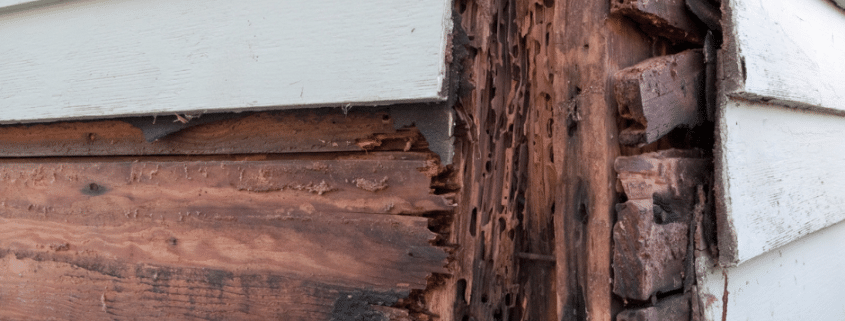Signs of Wood Rot: What to Look Out for and How to Deal with It
“Rotten” is never a word associated with something good, and wood rot around the house (or in the house itself) is no exception. Of course aesthetics are one factor to think about–after all nothing drains wood of its beauty like decay. But more than that, structural integrity is always compromised when wood begins to deteriorate. That’s why you need to know about it! In this article we’re unpacking the signs, risks, and (most importantly) what you can do about it. Let’s take a closer look.
Understanding Wood Rot Here in South Jersey
There are two main types of wood rot: dry rot and wet rot.
- Dry rot. This wood decay is caused by a certain species of fungi that digests the parts of the wood that give it its strength and stiffness. It is more severe because it can spread through wood even in relatively dry conditions.
- Wet rot. This is a general term that refers to a variety of fungal species that cause wood to decay due to high moisture levels. Wet rot is less destructive than dry rot but still needs addressing to prevent structural damage. It typically occurs when wood has been exposed to moisture for an extended period, often due to leaking pipes, damp basements, or external weather exposure.
Remember, both types eat the parts of the wood that give it its structural integrity and strength. Not good… The process can be accelerated by poor ventilation and persistent moisture, making areas with bad drainage, leaky plumbing, or high humidity particularly vulnerable.
Signs of Wood Rot
- Visual Indicators: First of all, what are visual signs you should watch out for?
- Look for wood that appears darker or discolored compared to surrounding areas. This change in color can often be a telltale sign of rot.
- Surfaces that seem spongy, stringy, or show signs of fungal growth such as white or yellow patches, or gray strands resembling cobwebs, also indicate decay.
- Texture Changes: You can’t always see wood rot, but that doesn’t mean you can’t discover it! Keep an eye out for the symptoms.
- Noticeable swelling, warping, or distortion of wood structures suggests prolonged exposure to moisture.
- Wood affected by rot will often be soft and crumble easily under slight pressure. This can often be tested with a simple poke of a screwdriver (note: it may
look relatively normal, especially if painted, but if you suspect unusual texture it’s worth looking into).
- Smell: Oh yes, wood rot smells, but not like old vegetables. It’s more like a musty, damp odor, particularly in confined spaces such as basements or attics. If you smell it, don’t ignore it!
- Structural Integrity: Finally, but maybe most importantly, structural signs. Difficulty operating windows or doors, which may stick or not close properly, can be a result of the wooden frames swelling due to rot. Floors that feel bouncy, spongy, or softer than usual are also warning signs of underlying rot.
Preventing Wood Rot
Preventing wood rot is all about moisture control. Ensure good ventilation, particularly in attics, crawl spaces, and basements, to help reduce moisture buildup. Keep all wood surfaces dry and well-sealed against water intrusion. Regular maintenance checks, especially after heavy rains or in wet seasons, can catch early signs of moisture issues before they lead to rot.
Having your exterior wood surface professionally painted is another way to prevent moisture from getting to the wood. Nothing protects like paint!
How do I Deal With Wood Rot?
If you’re reading this though, chances are wood rot has already made its way into your life.
For minor rot, removing the affected wood and treating the area with a fungicidal treatment can often suffice. However, major rot or cases where the structural integrity of the home is at risk require professional intervention. Understanding when to call in experts is essential; they can assess the extent of damage, perform necessary replacements, and ensure that the issue is resolved safely and effectively. Investing in proper repair is crucial to maintaining your home’s value and safety.
Let’s Recap!
Addressing wood rot is an essential aspect of home maintenance. By staying vigilant for signs of decay, maintaining a dry environment, and acting swiftly when issues are detected, homeowners can protect their investment and ensure their living space remains safe and sound. And when in doubt, consult with a professional who can provide peace of mind while preventing minor issues from becoming major headaches!
Need help addressing wood rot in your home before painting? Brennan Contracting knows wood. And we don’t just fix it, we make it look good as new! Contact us today for any more questions or inquiries. We’d love to help you!





Leave a Reply
Want to join the discussion?Feel free to contribute!